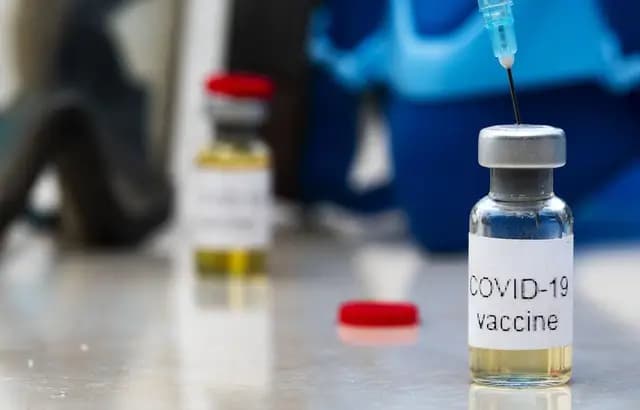RESEARCH: Currently, at least three Coronavirus Covid-19 vaccines have entered the last phase of their trial, before marketing
- While the epidemic remains active over much of the planet, many hopes rest on the race for the vaccines against the Covid-19.
- Several laboratories announced this summer that they had entered phase 3 of their clinical trial, which must determine whether their vaccine is effective and whether it presents a positive benefit-risk balance.
- What are the most advanced vaccine candidates? Where is the French project at? When can we reasonably expect this vaccine?
With an epidemic still large in many countries and no treatment to respond to it, the wait for a vaccine is particularly important. Almost every day, a company or a country communicates on its progress in terms of the vaccine against Covid-19. It is not clear whether Russia will save us all in this regard, or whether France still has a say.
To try to see more clearly 20 Minutes takes stock of this global vaccine race.
What are the most advanced projects?
“Between 150 to 200 vaccines are currently in development, but most of them are in preliminary stages”, emphasizes Bruno Lina, professor of virology at the University of Lyon 1.
Several centres or laboratories have started clinical trials, that is to say, injections on humans; Three of them are in the lead. “Three vaccine projects entered phase 3 in July: Moderna (American company), AstraZeneca (British laboratory) and Sinovac (Chinese laboratory), specifies this member of the Scientific Council. And eight more will enter phase three. At the end of the day, we have eleven vaccines that, to my knowledge, have reached significant levels of advancement. ”Knowing that phase 3, which aims to verify the effectiveness of the vaccine on 30,000 to 40,000 people, is the last step before applying for marketing authorization.
What about the French vaccine?
The Institut Pasteur is pursuing three different strategies to try to develop a vaccine against Covid-19. The most advanced is the one based on the measles vaccine; it entered phase 1 in July, with a clinical trial involving 90 people. “We modify the genetic heritage of the virus used in the measles vaccine so that it produces a coronavirus protein,” explains Christophe d’Enfert, scientific director of the Institut Pasteur. So that the vaccine protects against both measles and coronavirus. Preclinical studies are favourable: in animals, we find an immune response, that is to say antibodies that will prevent the coronavirus from entering cells. “
The second project uses a similar strategy, but relies on lentiviruses (including HIV). “Of course, these lentiviruses have been modified so as not to cause disease,” continues the specialist. The preclinical results are very encouraging. “
Third track: a DNA virus. “Here too, the preclinical data are very promising,” continues Christophe d’Enfert. The idea is to develop a DNA molecule that allows a cell to produce a coronavirus protein. The vaccination will consist of injecting these molecules which enter the cells, which start to produce a protein, and you trigger the immune reaction. “
Why does the Russian vaccine leave the scientific community doubtful?
Vladimir Poutine had declared on August 11 that a first vaccine “rather effective” had been registered in Russia by the Center for research in epidemiology and microbiology Nikolai Gamaleïa, in Moscow, in partnership with the Russian ministry of Defense. His little name? “Sputnik V” (V for vaccine), in reference to the Soviet satellite. But very little specific information has been leaked about this Russian vaccine and the announcement has been greeted with caution by the scientific community . Some even argue that a hastily developed vaccine could be dangerous, with the final phase of trials only starting this week.
The Russian sovereign wealth fund involved in the development of this vaccine has claimed that industrial production is expected to start in September. But since the start of research, the Gamaleïa Institute has been accused of breaking with the usual protocols to speed up the scientific process. “Putin is a politician, not a scientist, tackle Bruno Lina. To my knowledge, this trial begins phase 1 of development. The urgency is real, but we must not do “quick and dirty”. “
When is the vaccine due?
Britain’s AstraZeneca and American Moderna have announced that they could have finished their phase 3 trial by the end of 2020. “It may seem optimistic,” recognizes Christophe d’Enfert. But since the start of this crisis, the announced timings have been respected. Be careful, results don’t mean success! Bruno Lina is more careful. “There are still a significant number of steps to be taken in the safety and efficacy of the vaccine. If we manage to go very quickly, we can imagine a current vaccine or the end of the year 2021 ”. But if the three most advanced vaccines show negative Phase 3 trials, that will shift the cursor. Remember that phase 3 for the development of a vaccine can normally last between three and five years …
Especially since once a laboratory has obtained a marketing authorization, the question of the availability of this vaccine will not be an easy task. “The space in which we are going to distribute this vaccine is the planet: if you give two doses to 7 billion people, that means 14 billion doses to be produced, that is more than what we produce in one year in the world, warns Bruno Lina. We will have to develop a priority vaccination strategy. Projections assume that it will take more than a year to vaccinate all humans. Especially since the laboratories will have to manufacture this product without stopping the production of other vaccines…. But some of these pharmaceutical companies have anticipated the demand and have gotten into working order to release large-scale doses, even before the validation of the clinical trial. Thus, the Chinese Sinovac Biotech announced that it was ready to produce 100 million doses per year. “There is an industrial mobilization that is not usually done”, concludes Christophe d’Enfert.
Why is it going so fast?
Do not confuse speed and haste. Normally, the development of a vaccine against a new disease can take between nine and fourteen years.. If really, at least one of the three projects whose trials are in phase 3 obtains a marketing authorization in 2021, rarely such tight timings will have been kept. This can be explained by the mobilization of the world scientific community and equally exceptional funds released. “If it was so fast, it is also because we were able to rely on the research carried out on SARS-CoV-1. We knew on the one hand which antigen to use and which modification to make to this antigen so that it provokes immunity. The other factor is that at the Institut Pasteur, for the measles and coronavirus project, we were familiar with this vaccine technique. Indeed, we had modified the genetic heritage of the measles vaccine to produce a vaccine against chikungunya, currently in phase 3. Two other aspects were taken into account: the administrative procedures were accelerated, without limiting the constraints. Above all, we are still in the active circulation phase of the virus, so those vaccinated are likely to encounter the virus. “



